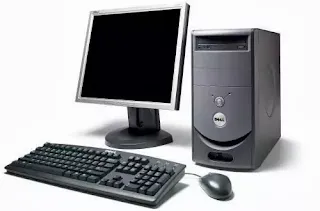History and Introduction of Computer:
Computers
have become an integral part of our lives and why not, they are so useful to
us. On the other hand, do you know who invented the computer? There is a very interesting and
long story behind this invention. But I will share my interesting information
with your friends about this invention.
One
thing to keep in mind is that no single invention or device can be said to be
the first form of the computer. The main reason for this is that the definition
of computers has changed over time and therefore it is impossible to call a
single computer the first computer. For example, many inventions that were once
recognized as computers. Today those computers are not recognized. So there may
be a difference between the date I mentioned and what you read.
Use of the word 'Computer':
It
is said that the word "computer" was first used in 1613 to describe a
person whose calculation was very fast.
Mechanical computer:
Charles
Babbage built a machine in 1822 that could perform very difficult calculus very
easily and quickly. Charles was also greatly assisted in the development of
this machine by "Ida Louie Lace". Ada is said to be the first
programmer of her time. But due to a lack of money, Charles could not complete
his machine. But in 1837 he came up with the idea of Analytical Engine. In
which there was the idea of the Arithmetic Logic Unit and other modern-day
computers. Charles could not see it in his life. But his son Henry completed
part of it in 1910.
The first programmable computer:
A
man named Conard Zosse from Germany is said to have built the world's first
programmable computer in 1936 and named it Z1.
The idea of a modern computer:
Which
computer we use today. Its basic structure was provided by Alan Turing in 1936
with a computer called the Turing Machine. This machine could print on paper
all the instructions that were given to it. Without this idea, we would not be
able to use today's computer.
The first computer company:
The
world's first computer company, Electronic Controls Company, was founded in
1949 by J. Presper Eckert and John Mauchly.
The first computer with RAM:
MIT
introduced the world's first computer, the Whirlwind machine, in March 1955,
with the idea of RAM.
The world's first PC:
In
1975, a scientist named Ed Roberts introduced a computer called Altair 8800 with
the word personal computer and at that time it cost 7 750. A variety of lights
were used.
History of Generations of Computer:
We
can divide the computer into five periods. Which are as follows.
The first computer age 1959-1942:
Early
computers used vacuum tubes that acted as high-speed switches. In 1943, the
ENIAC Electronic Numerical Integrator as well as Calculator was developed at the
University of Pennsylvania. The first computer, EDSAC, was created in 1949.
Then in 1952, the second computer advocacy (EDVAC) was created.
In
1951, a better computer, UNIVAC-1, began operating. The first generation of
computers had the following flaws: (1) Large size. (2) Slow speed. (3) Low
level of credibility. (4) High power consumption. (5) Difficult repair.
Second computer age 1965-1959:
With
the advent of transistor technology came the second age of the computer.
Transistors are smaller, faster, and less expensive than vacuum tubes.
Therefore, such computers were made using transistors. Who could complete their
work in microseconds? For the first time, high-level languages were used in
these computers. For example, Fortran, COBOL, and Basic. Other computers
include Honeywell, ICL and GE 636, 645, and more.
Third computer age 1972-1965:
The
era of microelectronics began in the 1960s with the advent of ICs. Therefore,
the use of IC has greatly reduced the size, cost, and power consumption of the computer.
In this way, the ability to store data on these computers has increased, and
their performance has become more reliable. Computers of this era include the
IBM-360 series, the ICL-1900, and the PDP-8 series.
The fourth age of computers 1980-1972:
With
the invention of the microprocessor, very low-cost computers began to be made,
and their size was greatly reduced. Intel Corporation of America developed the
first microprocessor, the Intel 4004, in 1971. It was a 4-bit microprocessor.
Then in 1973, he developed an 8-bit microprocessor. Clive Sinclair then ushered
in a new era of personal computers (PCs) by developing ZX-80 and ZX-81
computers at a very low cost. Another computer of this era was Apple, developed
in 1976. Other important computers include Commodore, IBM-3033, 4300, Cyber
205, Sharp PC-1211.
The fifth age of the computer 1980 and beyond:
By
the fourth century, the biggest flaw in computers was that they lacked the
power to think. And that's been a problem for scientists for a long time. In
the fifth age of computers, this step was taken. Computers will now be given the
ability to think, reason, learn, conclude, and make decisions. These machines
will use a large number of (VLSI) circuits. Thus artificial intelligence and
expert systems will be an important part of fifth-generation computers.








0 Comments
Dear Visitors: Please do not enter any spam link in the comment box. Thank you!